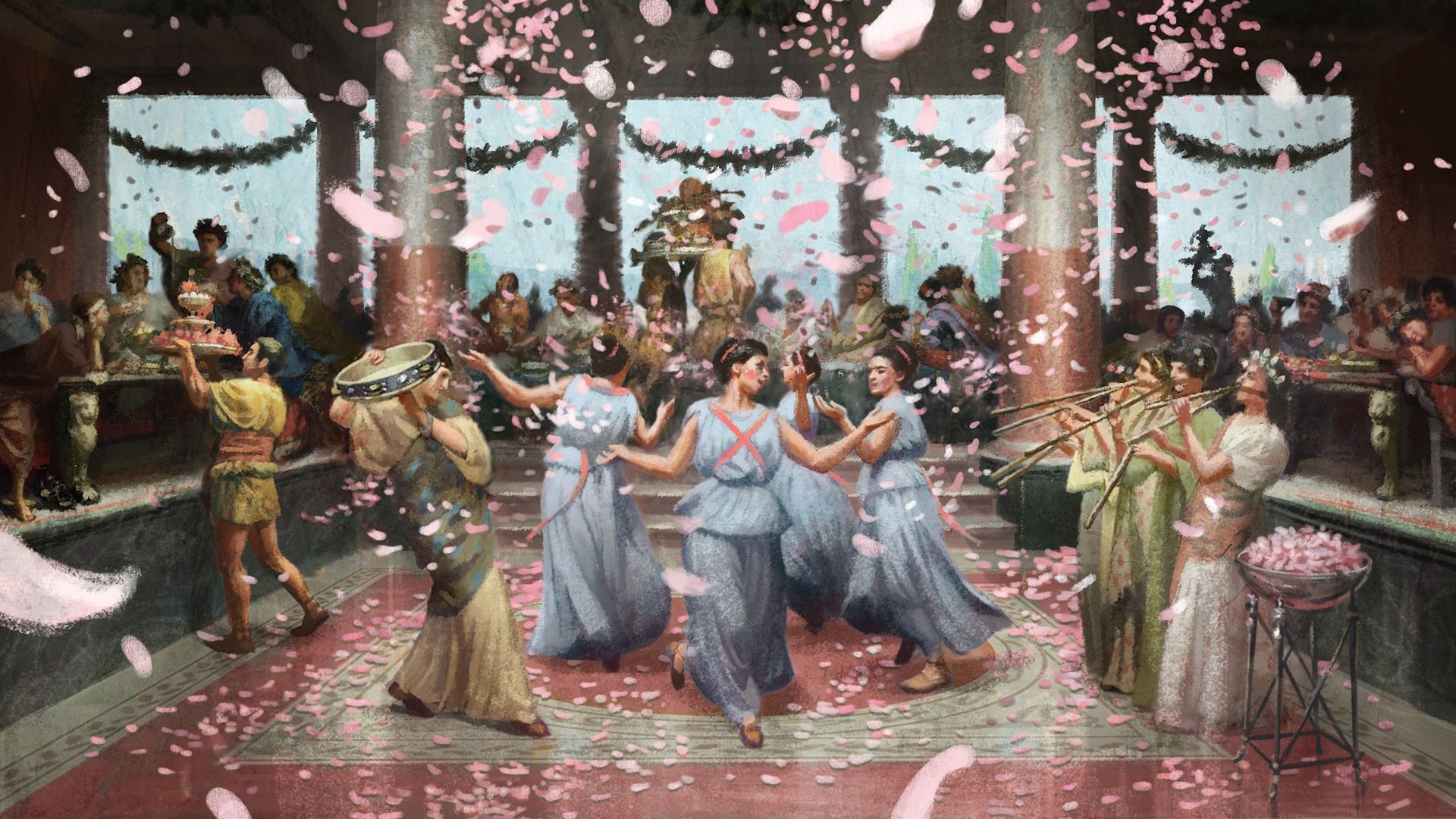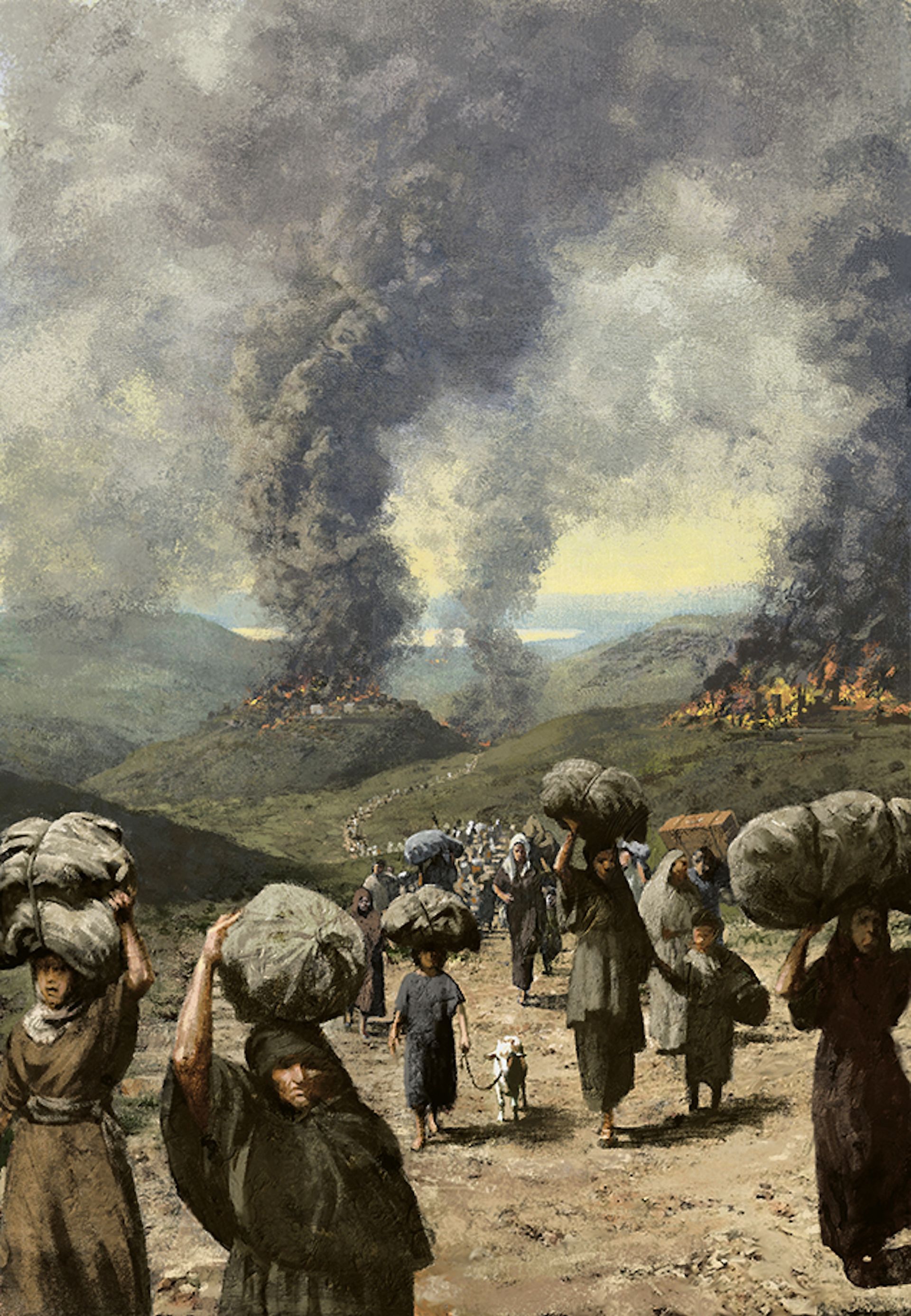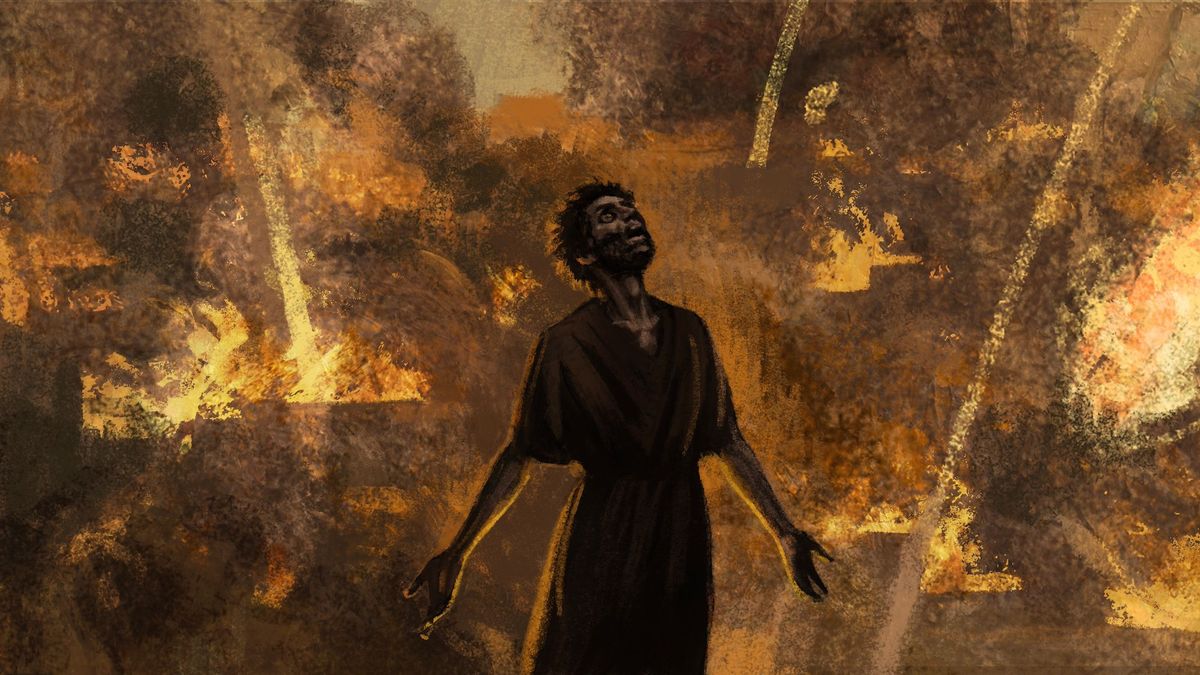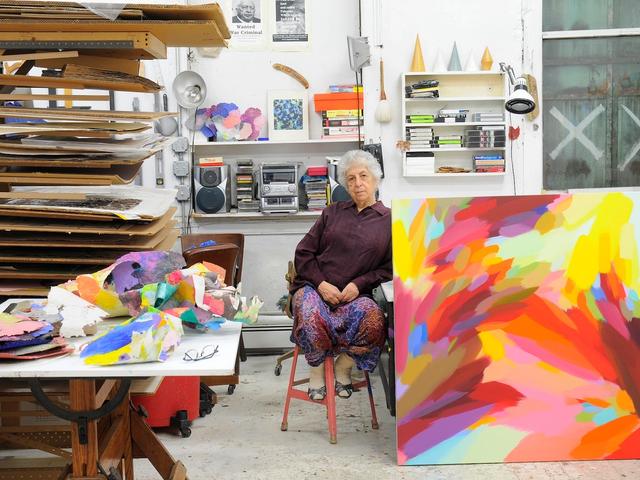An epic Israeli film about the destruction of Jerusalem and the Second Temple by the Romans in the first century—created entirely with original paintings—is seeking an audience in the United States, or anywhere else. Legend of Destruction, directed by Gidi Dar, is adapted from the Talmud and from the writings of the ancient Jewish historian, Flavius Josephus, who took part in the Jewish revolt against the Romans, only to change sides and then chronicle his people’s defeat and brutal punishment.
That bloody story is composed of 1,500 still images painted in Photoshop by two Israeli artists, with dialogue performed by actors in voiceover. The still images draw on the history of Western art, from the Fayum mummy portraits made in Roman Egypt to Caravaggio, Francisco de Goya, Edvard Munch and Francis Bacon, as well as Eadweard Muybridge-like photo-sequences.
The ambitious project took the better part of a decade to develop and premiered in Israel in 2021. By early 2023, it had become a stark reflection on a country sharply divided over attempts by prime minister Benjamin Netanyahu to weaken its supreme court. After 7 October 2023, the Hamas terrorist attack—in which around 1,200 Israelis were killed and more than 200 were taken hostage—and Israel’s invasion of Gaza became the larger frame for the film. A version voiced in English by a US cast that includes Oscar Isaac (also an executive producer), Elliott Gould, Billy Zane and Taxi star Marilu Henner has gone largely unnoticed, sidelined internationally (along with much Israeli culture) amid the international backlash following the Israeli military’s invasion, which has killed nearly 40,000 Palestinians according to the latest figures from the Hamas-run health ministry in Gaza.

A painting from Legend of Destruction (2021) Courtesy of Legend of Destruction
The film finds the roots of ancient Judea’s destruction in the divisions among Jews, with a Romanised elite that aped imperial culture and customs, as the lower classes trapped in poverty rebelled. Jews on both sides slaughtered each other, making peace just in time for the Romans to finish the job, levelling a city that was the envy of the empire.
“This is not a religious film, it’s a film about religion,” says Gidi Dar, a secular Israeli who set his 2004 feature, Ushpizin (Guests), within the contemporary ultra-orthodox community in Jerusalem. “The reason Jerusalem was destroyed was because of internal problems that had to do with class war, the rich, the aristocracy were corrupt and working with the Romans,” Dar adds, “and that’s what brought the zealots into action.”
The film premiered to mostly favourable reviews in Israel in 2021, connecting with orthodox audiences. “That’s because they knew the story,” says Dar. “Once you get into it, it’s an action movie, it’s a war movie, it’s Gladiator.”

A painting from Legend of Destruction (2021) Courtesy of Legend of Destruction
Despite its throwback to “sun, sex and sandals” sagas like Ben Hur, Legend of Destruction is no Gladiator. Its look comes from two artists, David Polonsky and Michael Faust, who both worked on the 2008 film Waltz with Bashir, an animated documentary by Ari Folman that revisited the 1982 Lebanese War, when Israel’s Phalangist allies massacred Palestinians in two refugee camps. Hallucinatory scenes recalled by PTSD-afflicted veterans implicated Israel in those killings. The film was nominated for an Academy Award in 2009 for Best Foreign Language Film.
For Legend of Destruction, Polonsky, arguably Israel’s best-known political cartoonist, and Faust, a trained painter, decided with Dar to work with images that don’t move, although the camera moves across them. “That’s why we spent seven years on this. It was exactly this cross-pollination between film and painting,” Polonsky says. “We pay homage to the whole history of western art throughout the film. We stole compositions from Caravaggio to Delacroix. We stole ideas from everybody.”
Rather than borrow from Hollywood, Polonsky and Faust modelled their characters’ faces after naturalistic Fayum portraits made for burial mummies from around 100CE. “They still look like real people today,” Polonsky adds. They were Romanised, just like the ruling classes in Palestine. They’re very credible.”

A painting from Legend of Destruction (2021) Courtesy of Legend of Destruction
For the decadent luxury of the Romanised Jewish elite that enraged the lower classes, the artists borrowed from the Dutch artist Lawrence Alma-Tadema (1836-1912), who painted ancient sumptuousness for Gilded Age buyers. Ridley Scott also credited Alma-Tadema for the look of Gladiator.
Some of the imagery the artists used for inspiration was local, for credibility—the faces of urban rioters from news photographs of the Intifada, for instance. It’s logical that Palestinians and the Jews of ancient Jerusalem would look alike, say Polonsky and Faust. Given the events of 7 October and the months since, the film’s rendering of the smouldering ruins of Jerusalem in 70CE could look to many viewers like heavily bombed parts of Gaza today.
The film is rendered in still pictures that the camera often moves across, pictures without motion—not animation, Polonsky and Faust stress, as in the painted animations of the 2017 Vincent van Gogh biopic Loving Vincent. The artists cite as an influence Chris Marker’s bleak science-fiction short La Jetée (1962), a black-and-white vision of Paris after a Third World War rendered in still photographs with voiceover narration. “La Jetée made me think that we could do the same thing with painting,” says Polonsky.

A painting from Legend of Destruction (2021) Courtesy of Legend of Destruction
“We don’t really have a catchy name for it. Is it an illustrated movie? Every time we come up with a name it sounds unattractive. Would you go watch a spoken storyboard,” Polonsky asks. “The technique was always seen at the beginning as a barrier that might scare off the audience and we were very happy to see that it doesn’t,” he adds, noting the response to the film in Israel.
What has scared off audiences outside Israel and the international film industry is the war in Gaza. Israeli films are now seen as toxic, says Udy Epstein, the US distributor for Legend of Destruction. The film was not invited to any film festivals except at the Jewish Community Center in Manhattan, the only place where it has screened to date outside Israel.
Dar, however, sees these challenges as an opportunity. “Disagreement? That’s good for a movie, it’s not bad for a movie,” he says.
A test is coming. Legend of Destruction will screen on August 12 and 13—marking Tisha B’Av, the anniversary of the destruction of the First and Second Temples—in around 50 locations in the US and 60 internationally, almost all screenings organised by and for Jewish communities. So far, the art audience is untapped.
Watch a trailer for Legend of Destruction:



